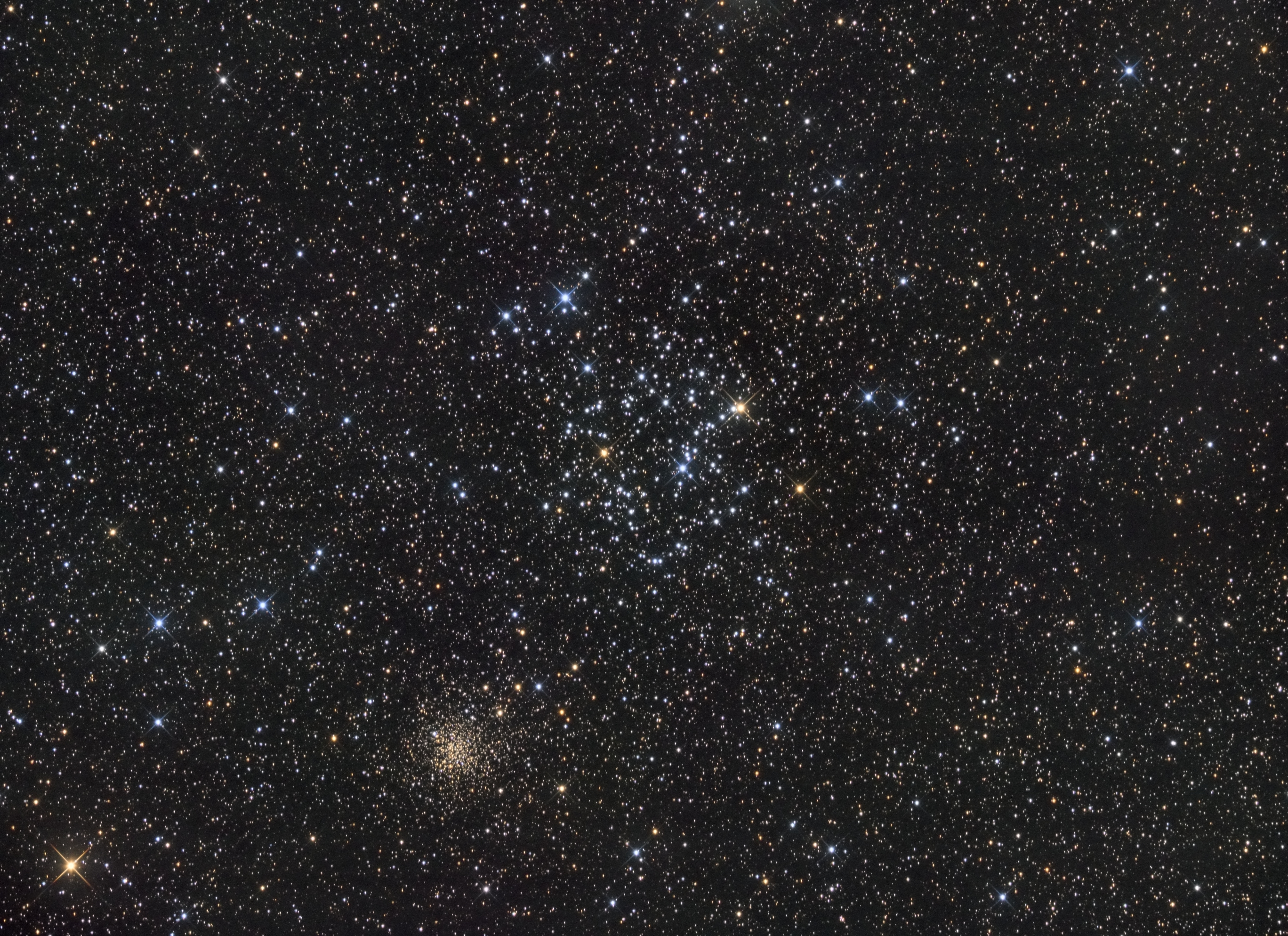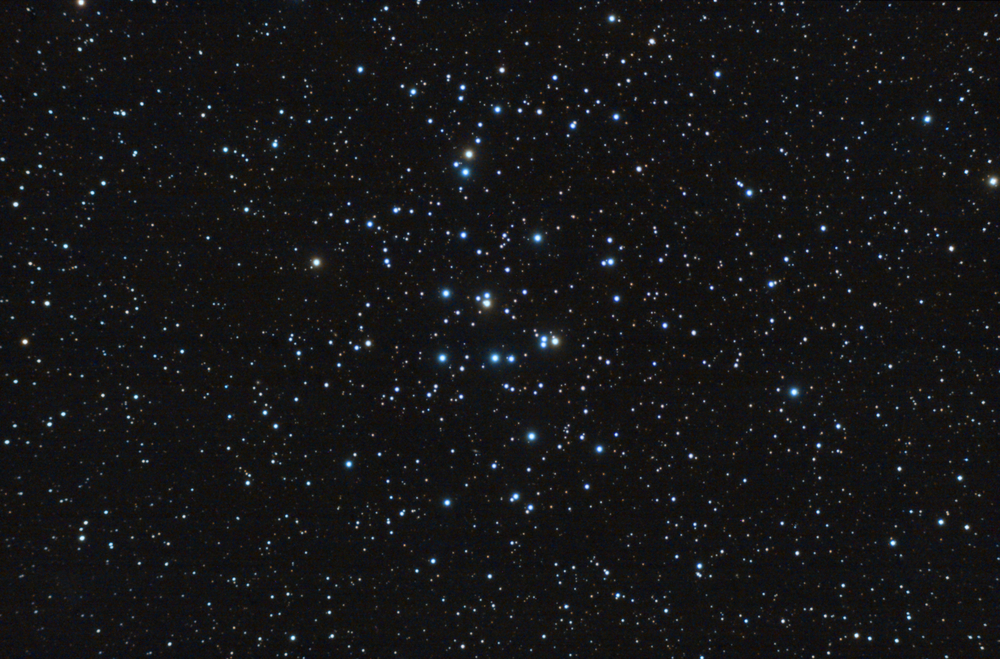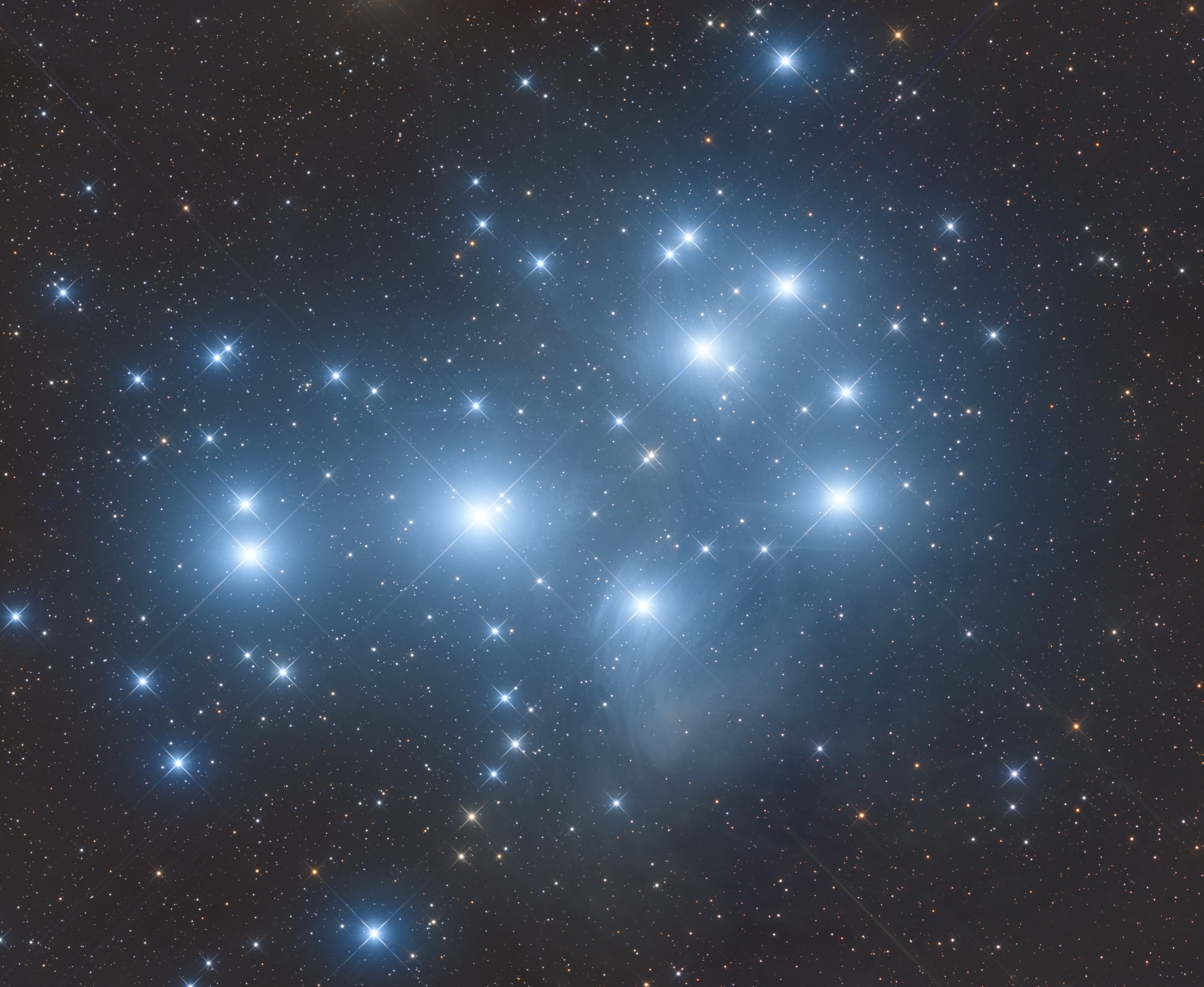The top 5 deep-space objects to look for in the winter night sky
We are now at the midpoint of winter in the Northern Hemisphere, and on a clear and cold night the sky is especially transparent, and the faintest stars abound in great profusion. Careful skywatchers can pick out dim borderline stars and nebulas that cannot be seen at other seasons when the air is less clear.
This week, without the light of a bright moon to interfere, and using a small telescope or just a simple pair of binoculars, you can check out what I consider to be winter's "top five" noteworthy deep-sky objects; four are beautiful star clusters and the fifth is a cloud of gas recognized as a stellar incubator and perhaps the finest deep-sky object in the entire sky.
We present them here, in ascending order of merit:
5. Messier 35

This bright open star cluster is beautiful through small binoculars and spectacular in a small telescope. It is located in the constellation Gemini, the twins, positioned above and to the right of the third-magnitude star Propus, off the trailing left foot of Castor. This week it stands high in the southern sky at around 9 p.m. local time. It is visible with the unaided eye under favorable dark sky conditions.
Garrett P. Serviss, who was a popularizer of astronomy at the turn of the 20th century, wrote in his book "Astronomy with an Opera Glass" that to the naked eye, "It is a nebulous speck." The 19th-century English merchant and astronomer, William Lassell, said that this cluster is "a marvelously striking object. No one can see it for the first time without an exclamation," according to "New Handbook of the Heavens" (McGraw Hill, 1948).
In low-power binoculars it may look like a dim, fairly large unresolved interstellar cloud, but look again. Even through light-polluted suburban skies, 7-power binoculars reveal at least a half dozen of the cluster's brightest stars against the whitish glow of about 200 fainter ones, whose stars appear in curving rows, reminiscent of the bursting of a skyrocket.
While here, also look for NGC 2158, a smaller, fainter open cluster on the southwest edge of M35. It appears in small telescopes as a circular smudge, which has fooled many (like me) into thinking that they might have discovered a new comet. It lies about 16,000 light-years away from Earth — five times more distant than M35.
Breaking space news, the latest updates on rocket launches, skywatching events and more!
4. Messier 44

Situated in the middle of the dull constellation of Cancer, the crab appears a hazy patch of light to the naked eye. But it becomes a large and beautiful scattered cluster of stars in binoculars. This week, at 9 p.m. local time, it can be found halfway up in the east-southeast sky; highest in the southern sky before midnight.
Messier 44, or M44, is one of the sky's finest open clusters, easy to see through binoculars even from most cities and with the naked eye from dark locations. Some sharp-eyed viewers can almost resolve it with just their eyes alone. If you're blessed with a night that is dark and transparent you can see M44 with the naked eye as a dim patch of subtle light. But the slightest haze in the sky will wipe it out. Before light pollution existed, the ancients regarded M44's disappearance as foretelling the approach of rain, according to "Burnham's Celestial Handbook" (Dover, 1978).
Binoculars are ideal for examining this wide, interesting star field. To find it, trace an imaginary line from Sirius (the brightest star) to its upper left through the star Procyon. With binoculars, slowly continue along this line and eventually you should run across this cluster of stars.
Some astronomy texts refer to M44 as "Praesepe, the manger," while others call it the "Beehive" cluster. A manger is defined as "a trough in which feed for donkeys is placed." The cluster was apparently first called Praesepe 20 centuries ago; ancient Greek and Roman astronomers depicted two nearby stars of Cancer, Asellus Borealis and Asellus Australis — the northern and southern donkeys — as feeding from a manger, according to the astronomy book "A Year of the Stars" (Prometheus, 2003). Galileo first resolved the cluster into stars in 1610.
More than 200 stars can be seen in M44 using binoculars or a telescope. It contains a few orange stars and many bluish-white and yellow stars. The cluster's relatively "new" moniker — "Beehive" — apparently evolved thanks to its central group of stars so arranged into rough rows that form a generally triangular shape, suggesting a beehive.
3. Double Star Cluster in Perseus
You might call this cluster "Beehive squared." This week, at 7 p.m. local time, look to the northwest and about two-thirds of the way from the horizon to the point overhead, you'll see the familiar zigzag row of five stars marking the constellation of Cassiopeia, the queen. Now going from top to bottom, the second and third stars are, respectively, Ruchbah and Gamma Cass. Stretch an imaginary line between these two stars and continue moving upward. The naked eye will see what appears to be a brighter patch of the Milky Way.
Unlike the Beehive, there are actually two concentrations of stars here, called h Persei and Chi Persei, popularly known as the Double Star Cluster of Perseus.
The ancient astronomers Hipparchus and Ptolemy described the Double Cluster as a cloudy spot. Galileo with his crude telescope first noticed they were really a double cluster of stars.
Astronomers estimate that the clusters' apparent brightness is dimmed by roughly 1.7 magnitudes compared to their actual brightness, thanks to interstellar dust. When we take this into account, it turns out that the 10 brightest stars of this Double Cluster are actually comparable to such brilliant luminaries as Betelgeuse and Rigel in the constellation Orion. Each cluster contains very massive blue stars and some of the brightest red stars known.
The blue stars are extremely hot, on the order of 100,000 degrees Fahrenheit (56,000 degrees Celsius), blazing out energy so fast that they cannot keep it up for more than 10 million years, changing to red as they age. Estimates place these star clusters at a distance of about 7,400 light-years from Earth. The two clusters appear to overlap and together, their apparent size in the sky exceeds that of the full moon. In binoculars or a small telescope they form one of the most impressive and spectacular objects in the heavens.
2. The Pleiades
I think one of the very first sky objects I ever noticed as a burgeoning young amateur astronomer was the Pleiades star cluster, popularly known as "The Seven Sisters." In just a casual glance around the wintertime sky, they call your attention to them.
To the average eye, this group of stars looks at first like a shimmering little cloud of light. But further examination, aided by good eyesight, will reveal a tight knot of six or seven stars, though some have recorded 11 or more under excellent conditions. Alcyone is the brightest star in the cluster, while Merope is a star surrounded by a cloud of gas producing a blue reflection nebula. They are all part of Taurus, the bull, representing a spot on the bull's shoulder.
Whenever I gave talks under the dome of New York's Hayden Planetarium, I would tell my audience that the reason the bull was so angry was probably that he had seven bumblebees stinging him. I would then direct my pointer to the Pleiades. This week at 7 p.m., you'll see them soaring high in the southern sky.
The Pleiades have always been held in high esteem through the ages. About 500 stars have been identified as members of this cluster. About 410 light-years away and some 20 light-years across, the group may be no older than 20 million years. Gaze at them through binoculars: a splendid sight, the brightest stars glitter like an array of icy blue diamonds on black velvet. Their naked-eye appearance was neatly described by the poet Alfred Lord Tennyson in his poem "Locksley Hall" as glittering "like a swarm of fireflies tangled in a silver braid."
1. Messier 42
We finish our tour of the top five winter deep sky objects with undoubtedly one of the most wonderfully beautiful objects in the sky: M42, more popularly known as the great Orion Nebula. It appears to surround the middle star of the three in line that marks the hunter's sword in the constellation Orion.
M42 is invisible to the unaided eye, though the star itself appears a bit fuzzy. It is resolved in good binoculars and small telescopes as a bright gray-green mist enveloping the star; larger instruments reveal considerable detail with branches, rifts and bays. In larger telescopes it appears as a great glowing irregular cloud.
A sort of auroral glow is induced in this nebula by fluorescence from the strong ultraviolet radiation of four hot stars, known as the Trapezium, entangled within it. The Great Orion Nebula is a vast cloud of extremely tenuous glowing gas and dust, approximately 1,340 light-years away from Earth and about 24 light-years across (or more than 16,000 times the diameter of the entire solar system). The density of all this material is less than a millionth the density of the best laboratory vacuum, and yet the total mass of the cloud — tenuous as it is — is more than 2,000 times the total mass of our own sun. Astrophysicists now believe that this nebulous stuff is a stellar incubator; the primeval chaos from which star formation is presently underway. Truly, it is one of the marvels of the night sky!
Joe Rao serves as an instructor and guest lecturer at New York's Hayden Planetarium. He writes about astronomy for Natural History magazine, the Farmers' Almanac and other publications. Follow us on Twitter @Spacedotcom and on Facebook.

Joe Rao is Space.com's skywatching columnist, as well as a veteran meteorologist and eclipse chaser who also serves as an instructor and guest lecturer at New York's Hayden Planetarium. He writes about astronomy for Natural History magazine, Sky & Telescope and other publications. Joe is an 8-time Emmy-nominated meteorologist who served the Putnam Valley region of New York for over 21 years. You can find him on Twitter and YouTube tracking lunar and solar eclipses, meteor showers and more. To find out Joe's latest project, visit him on Twitter.



